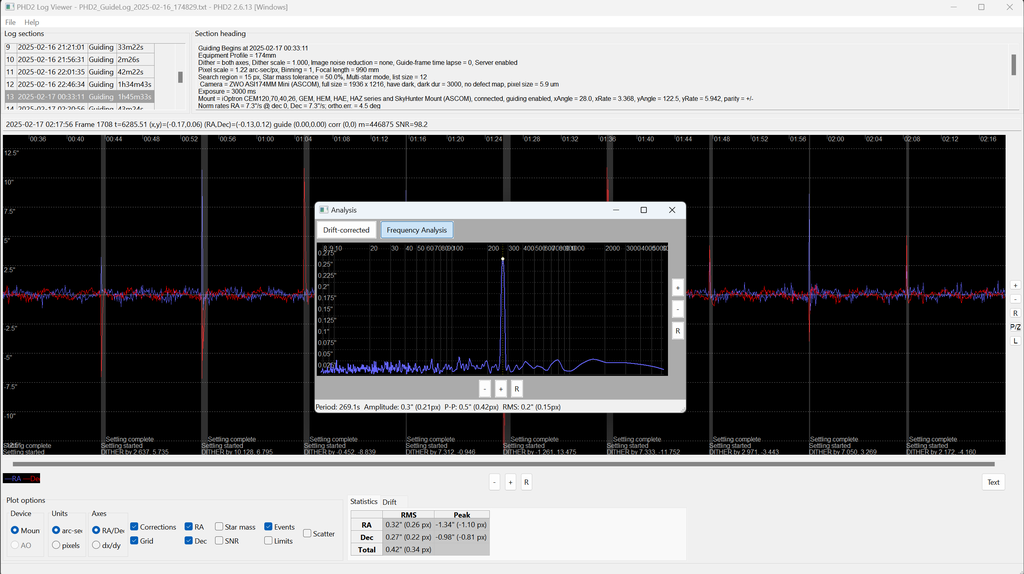Hello Tobi.
I have owned and used the HAE69ec now probably more than most (I also have the HAE69c without the encoder). I have used it for more than a year. I watched Dark Sky Geek's review, and frankly the one thing that bothered me with that review is he really never bothered to correct his PA because it was "not as straight forward" as his CEM70 or CEM60. I agree with him that the PA process can be a little finnicky, but I never had trouble getting my PA down to under 1' in my backyard in less than 5 minutes, once I got used to its behavior. So it puts some of his other tests after that in question if his PA was never under 40' through out the testing.
I have put multiple scopes on it, most the AG Optical FA12 (55lb payload) with a sampling of and now I have it housed remotely with a TOA-130 on it, and it has been imaging almost every night.
AG Optical was sampled at 0.49"/px, and the TOA-130 is sampled at 0.783"/px.
What is your guiding accuracy? At which sampling/focal length and payload?
Guiding accuracy on average is 0.4-0.45". Often it is under 0.4" under good seeing conditions for targets slightly farther away from the celestial equator. This has held true for both the TOA-130 and the AG Optical FA12.
Did you do a frequency analysis in PHD2? Whats your PE with the encoders?
To be clear, there is
only one encoder on the RA axis, and it is a "high precision encoder" not an "absolute encoder". The are no encoders on the DEC axis, and it really does not need it. When measuring PE using guiding assistant, I find a native PE value in one period about 3” peak-peak (or +/-1.5”) .

How much is your backlash?
I have tested Backlash in PHD2, and I got some wildly variable results, anywhere from 100ms to 2000ms. When I applied the Backlash compensation settings in PHD2, especially if I used the higher recommendations that are more than 700ms, the guiding actually significantly worsens, and demonstrates that there is significant "overcompensation". I have been guiding without any backlash compensation and it worked much better. I think in reality the backlash is small, but there is something in that test that is producing erratic results. I haven't checked this in a very long time. I might give it another try.
Bottom line, this mount is a step above any other non-encoder based harmonic mounts. It retains the benefits of SWG mounts of being excellent Payload / Mount weight ratio, and the need for CW is optional. Personally I kept using a counterweight on it anyway to improve wind resistance, but obviously no balancing is needed.
Don't expect performance similar to a Mach 2 or a 10micron with absolute encoders. But it has performed well out of the box for me.
In terms of reliability, I have had one issue with the mount. The mainboard failed and it had to be replaced under warranty. iOptron was quick to respond and fix it, and the turnaround was about 3 weeks. I haven't had any issues since.
Hope that helps.



